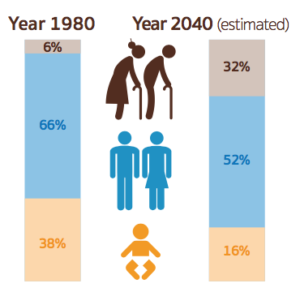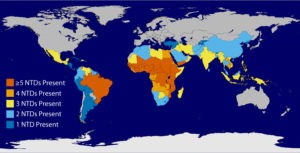BMGF-MASHA PhD BURSARIES in Mathematical Modelling for Malaria Elimination in Southern Africa
BMGF-MASHA PhD BURSARIES in Mathematical Modelling for Malaria Elimination in Southern Africa Closing date: 5 September 2022. Applications received after the closing date will not be considered. The Modelling and Simulation Hub, Africa (MASHA), a research group at the University of Cape Town (www.masha.uct.ac.za) is offering PhD bursaries to support a Bill and Melinda Gates Foundation (BMGF) funded project entitled ‘Malaria Modelling and Analytics: Leaders in Africa (MMALA)’. With a geographic focus in Southern Africa, the overall aim of the research project is to grow local capacity for malaria model development through increasing the number of PhD-trained mathematical modellers with malaria expertise in the Elimination 8 countries working to eliminate malaria by 2030. Candidates are sought from Angola, Botswana, Eswatini, Mozambique, Namibia, South Africa, Zambia, Zimbabwe to conduct doctoral research on projects linked to National Malaria Control Programme policy priorities. These could include, for example, using malaria modelling to estimate the path to elimination, assessing the impact of artemisinin resistance and optimising sub-national tailoring of interventions. Candidates will be enrolled in a residential three year programme at the University of Cape Town, and will benefit from advanced training in the first 6 months of the programme, with ongoing training throughout the degree. The successful candidates will form part of an inter-disciplinary research team from the University of Cape Town, the Elimination 8 Initiative, the Clinton Health Access Initiative (CHAI), Applied Centre for Climate and Earth Systems Science (ACCESS), Oxford University and malaria experts from the region. Required experience and skill ...
Read more
Read more

Pharmacometrix Post-doc Position at Medicines for Malaria Venture
MMV is offering a 3 year post-doc position (https://www.mmv.org/about-us/work-us/jobs#op-395680-pkpd-translational-medicine-scientist-postdoc-fellowship) Defeating Malaria Together | www.mmv.org ...
Read more
Read more
Modelling COVID-19 transmission: from data to intervention
Modelling COVID-19 transmission: from data to intervention
Read more
Read more
Modelling the COVID-19 epidemic and implementation of population-wide interventions in Italy
Modelling the COVID-19 epidemic and implementation of population-wide interventions in Italy Nature Medicine (2020) ...
Read more
Read more

The effects of demographic change on disease transmission
The demographic structure of populations in both more developed and less developed countries is changing: increases in life expectancy and declining fertility have led to older populations and smaller households. The implications of these demographic changes for the spread and control of infectious diseases are not fully understood. While reasonable over short time frames, for example Melioidosis and RSV, this assumption is clearly unrealistic when considering the long term dynamics of an endemic disease.
Read more
Read more
Scaling up prevention and treatment towards the elimination of hepatitis C: a global mathematical model
https://www.thelancet.com/journals/lancet/article/PIIS0140-6736(18)32277-3/fulltext Authors: Alastair Heffernan, Graham S Cooke, Shevanthi Nayagam, Mark Thursz, Timothy B Hallett Summary Background The revolution in hepatitis C virus (HCV) treatment through the development of direct-acting antivirals (DAAs) has generated international interest in the global elimination of the disease as a public health threat. In 2017, this led WHO to establish elimination targets for 2030. We evaluated the impact of public health interventions on the global HCV epidemic and investigated whether WHO's elimination targets could be met. Methods We developed a dynamic transmission model of the global HCV epidemic, calibrated to 190 countries, which incorporates data on demography, people who inject drugs (PWID), current coverage of treatment and prevention programmes, natural history of the disease, HCV prevalence, and HCV-attributable mortality. We estimated the worldwide impact of scaling up interventions that reduce risk of transmission, improve access to treatment, and increase screening for HCV infection by considering six scenarios: no change made to existing levels of diagnosis or treatment; sequentially adding the following interventions: blood safety and infection control, PWID harm reduction, offering of DAAs at diagnosis, and outreach screening to increase the number diagnosed; and a scenario in which DAAs are not introduced (ie, treatment is only with pegylated interferon and oral ribavirin) to investigate the effect of DAA use. We explored the effect of varying the coverage or impact of these interventions in sensitivity analyses and also assessed the impact on the global epidemic of removing certain key countries from the package of interventions. Findings By ...
Read more
Read more
Modeling HIV-HCV coinfection epidemiology in the direct-acting antiviral era: the road to elimination
Virlogeux et al. BMC Medicine (2017) 15:217, DOI 10.1186/s12916-017-0979-1 BACKGROUND: HCV treatment uptake has drastically increased in HIV-HCV coinfected patients in France since directacting antiviral (DAA) treatment approval, resulting in HCV cure in 63% of all HIV-HCV patients by the end of 2015. We investigated the impact of scaling-up DAA on HCV prevalence in the whole HIV population and in various risk groups over the next 10 years in France using a transmission dynamic compartmental model. RESULTS: On January 1, 2016, 156,811 patients were registered as infected with HIV in France (24,900 undiagnosed patients) of whom 7938 (5.1%) had detectable HCV-RNA (722 undiagnosed patients). Assuming a treatment coverage (TC) rate of 30%/year (i.e., the observed rate in 2015), model projections showed that HCV prevalence among HIV patients is expected to drop to 0.81% in 2026. Sub-analyses showed a similar decrease of HIV-HCV prevalence in most risk groups, including LR MSM. Due to higher infection and reinfection rates, predicted prevalence in HR MSM remained stable from 6.96% in 2016 to 6.34% in 2026. Increasing annual TC rate in HR MSM to 50/70% would decrease HCV prevalence in this group to 2.35/1.25% in 2026. With a 30% TC rate, undiagnosed patients ould account for 34% of HCV infections in 2026. CONCLUSIONS: The model suggests that DAA could nearly eliminate coinfection in France within 10 years for most risk groups, including LR MSM. Elimination in HR MSM will require increased treatment coverage ...
Read more
Read more
Multi-drug resistance tuberculosis transmission model
The burden of transmitted multi-drug resistance among epidemics of tuberculosis A transmission model.pdf A dynamic transmission model of multi-drug resistance tuberculosis (MDR-TB) epidemic was constructed with the inclusion of transmission-related and treatment-related acquisition of resistance. This modelling study showed that most of the incident MDR-TB cases are more likely from transmission than treatment-related acquisition of resistance. It also highlighted the point that the improvement in diagnosis and treatment of MDR-TB such as new tests and regimens are the keys to reduce the burden of MDR-TB. Figure below is the simplified schematic of the model showing progression through stages of tuberculosis infection, disease, and treatment, and showing the opportunities to develop drug-resistant tuberculosis via either acquisition or transmission of resistance ...
Read more
Read more

Neglected Tropical Disease
Neglected tropical diseases (NTDs) are a diverse group of tropical infections which are especially common in low-income populations in developing regions of Africa, Asia, and the Americas. They are caused by a variety of pathogens such as viruses, bacteria, protozoa and helminths ...
Read more
Read more

